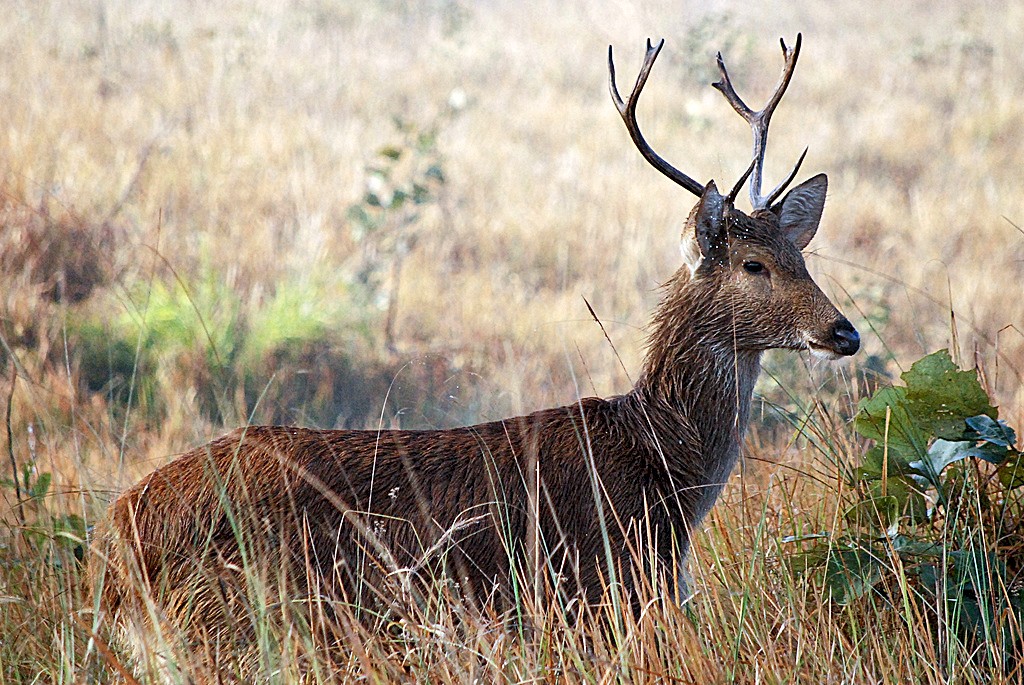
Barasingha
 The barasingha, sometimes barasinghe, also known as the swamp deer, is a deer species distributed in the Indian subcontinent. Populations in northern and central India are fragmented, and two isolated populations occur in southwestern Nepal. It has been extirpated in Pakistan and Bangladesh, and its presence is uncertain in Bhutan.
The barasingha, sometimes barasinghe, also known as the swamp deer, is a deer species distributed in the Indian subcontinent. Populations in northern and central India are fragmented, and two isolated populations occur in southwestern Nepal. It has been extirpated in Pakistan and Bangladesh, and its presence is uncertain in Bhutan.
It takes its name from the French naturalist Alfred Duvaucel.
The swamp deer differs from all other Indian deer species in that the antlers carry more than three tines. Because of this distinctive character it is designated bārah-singgā, meaning “twelve-orned” in Hindi. Mature stags usually have 10 to 14 tines, and some have been known to have up to 20
In Assamese, barasingha is called dolhorina; dol meaning swamp.
It is considered vulnerable, though historic records show that in the past there were a great deal more of this species in the past. A great deal of land has been lost for this species, as its habitat has been turned into farmland.
3 subspecies are recognized
- Eastern Swamp deer – roughly 1000 live in the wild
- Western Swamp deer – not severely threatened
- Southern Swamp deer – in 2015 a total of around 750 of this subspecies was counted. This is a large increase in the last 2 decades, but still clearly endangered. Thankfully, there are a number of places where it is found, which means that a single environmental (or disease) could not wipe out the whole population.
Much of these populations live outside protected areas, suggesting that while currently doing alright, it is quite possible that this could change in the near future. One effort to protect these deer, was to move some of these deer to Chitwan national park in Nepal failed.
In 1992, there were about 50 individuals in five Indian zoos and 300 in various zoos in North America and Europe. Swamp deer were introduced to Texas, though they exist only in small numbers on ranches. This species is mentioned around 10 times in the original jungle book.
 The barasingha, sometimes barasinghe, also known as the swamp deer, is a deer species distributed in the Indian subcontinent. Populations in northern and central
The barasingha, sometimes barasinghe, also known as the swamp deer, is a deer species distributed in the Indian subcontinent. Populations in northern and central 









